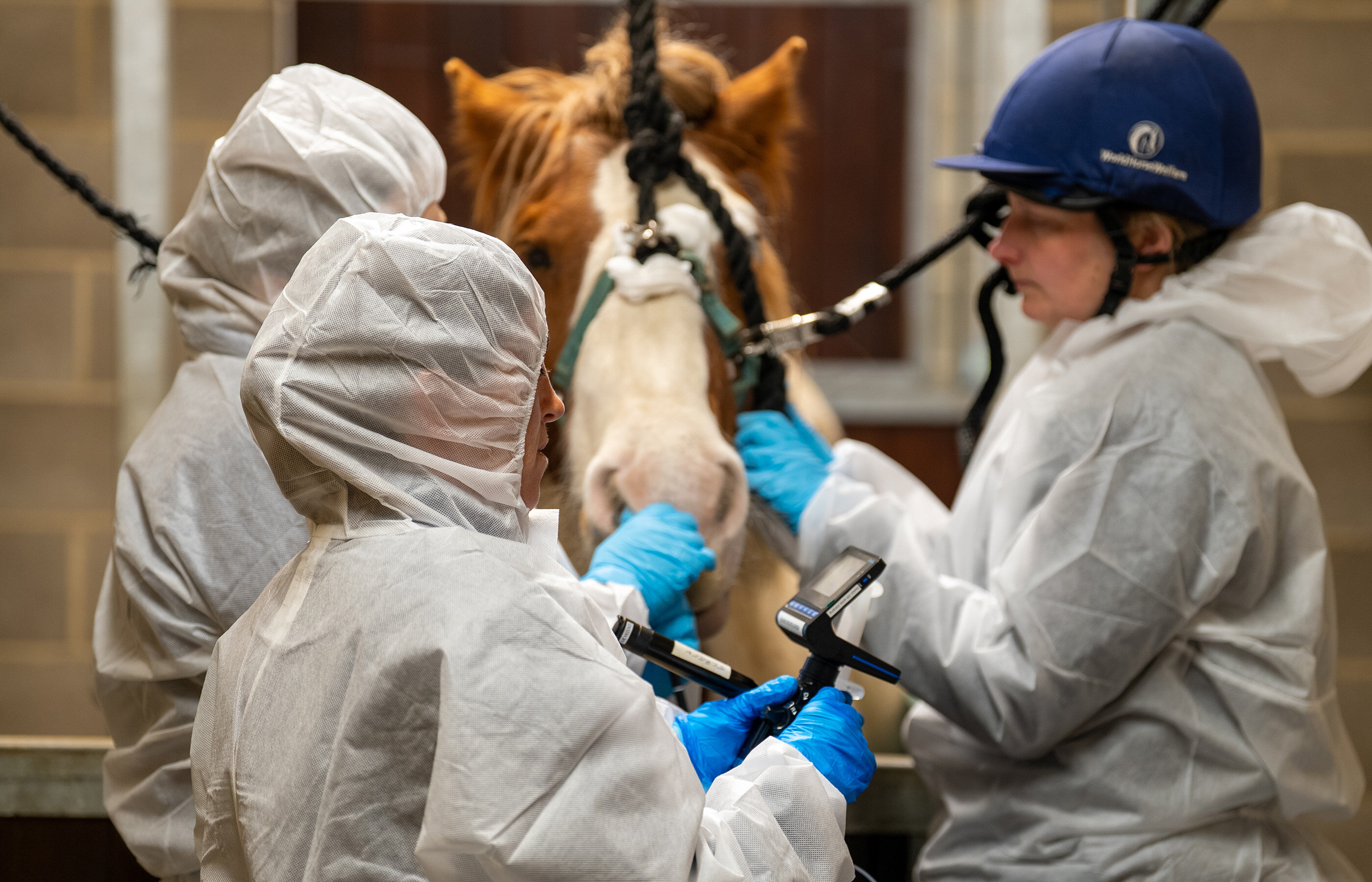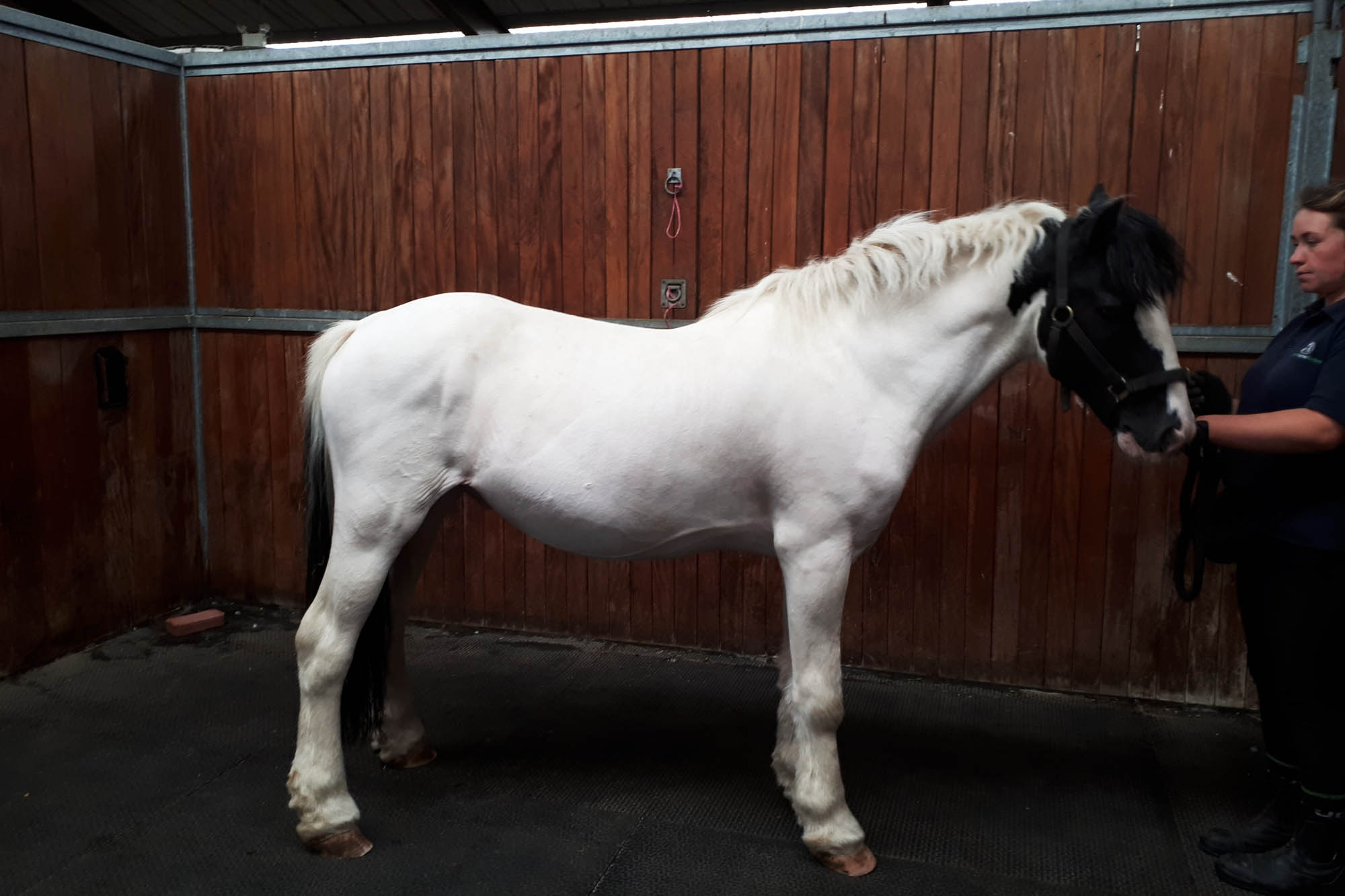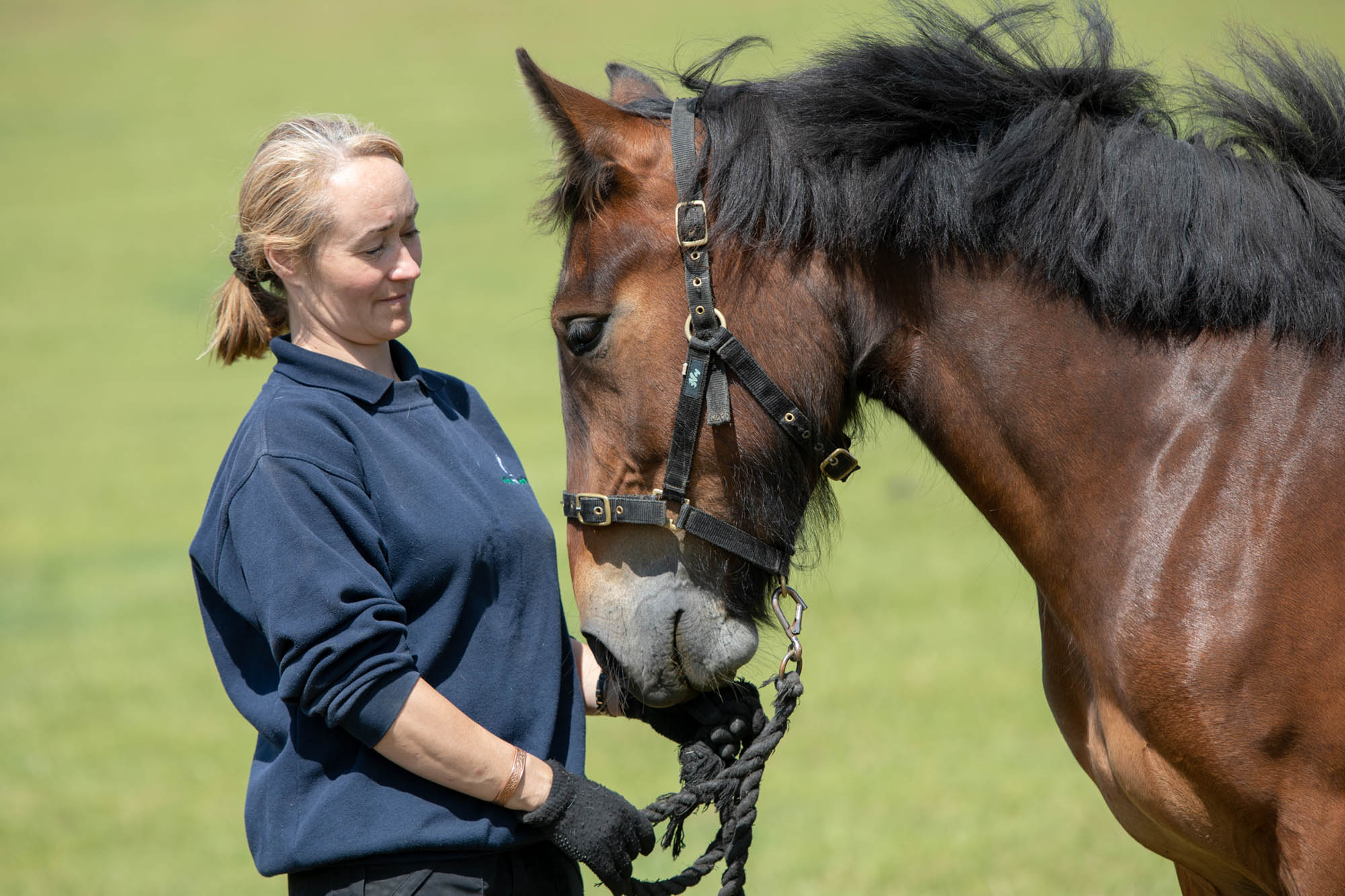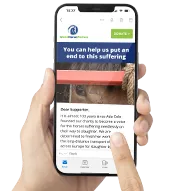Strangles can be stubborn. But so are we!
How we’re treating horses and clearing carriers of the disease at Hall Farm.
Posted on 11/07/2025

Our dedicated team at Hall Farm Rescue and Rehoming Centre has been working tirelessly to manage an outbreak of strangles over the past five months – an outbreak which forced the farm to close and rehoming to stop.
But now, we’re thrilled to have reached a real milestone as part of our phased return to normal activities with rehoming back on the cards – and the first horses already leaving for loving new homes.
The journey to get to this point has been long, stressful and hard, but a very specific and complex screening process has been followed to ensure all of the horses ready for rehoming are clear of this highly contagious disease.
We caught up with Malcolm Morley, our Director of UK and an equine vet, to find out more…
When strangles hit Hall Farm earlier this year, we knew we were in for a tough few months. It’s a highly contagious disease, often invisible in the early stages, before causing fever, nasal discharge and swollen lymph nodes that can form painful abscesses.
The farm went into lockdown. Horses were split into closed groups, hygiene was stepped up, and every individual was monitored. It’s been a lot of hard work for our team but most of the horses are now through the worst. However, with strangles, even healthy-looking horses can still carry the bacteria.
The guttural pouch
One of the reasons why strangles can be so persistent lies in a part of the horse’s anatomy called the guttural pouch. Horses have two of these air-filled spaces at the back of the throat.
For reasons we don’t fully understand, strangles bacteria can hang around in the guttural pouch even after the horse appears to have recovered. It doesn’t happen in every case, but when it does, the horse may look completely normal on the outside while still carrying infection inside.
Chondroids: hardened lumps of pus
In some horses, the strangles bacteria trigger a build-up of pus that then hardens over time into what are called chondroids. These are solid, cheese-like lumps sitting inside the guttural pouch. Treating a strangles carrier isn’t just about giving a course of antibiotics because these chondroids need to be physically removed.
Our vets use an endoscope — a thin, flexible camera — to look up inside the guttural pouch. If they find chondroids, they pass a fine wire basket through the narrow channel inside the scope. The basket is tightly coiled to fit through the endoscope, but once it emerges into the pouch, it springs open and can be gently manoeuvred to grab and remove the lumps. Once the chondroids are out, the pouch is thoroughly flushed with sterile fluid to clean away any remaining debris.

The infection you can’t see
Even when the guttural pouch looks clear to the eye, the infection may still be there and that’s when we need to check more closely.
After flushing the pouch, we take fluid samples and send them to a lab for specialist testing. This looks for the DNA of Streptococcus equi, the bacteria that causes strangles. It’s a bit like investigating a crime scene — we’re searching for forensic traces that prove the culprit is still lurking. A positive result tells us the infection hasn’t gone, even if the pouch looks spotless to the naked eye and there’s more work to do.
Reverse thermosetting gel: helping penicillin stay put
One of the most useful tools we’ve been using is reverse thermosetting gel mixed with penicillin.
When it’s cold, the gel is a thin liquid that’s easy to handle and inject. But as soon as it enters the guttural pouch and warms to body temperature, it transforms into a gel. This means the antibiotic stays exactly where it’s needed, and for long enough to be effective, rather than simply draining away too quickly to make a difference.
The process takes careful timing. The gel is kept chilled in iced water until the moment it’s needed. With the endoscope already in position, the vet draws up the cold gel and quickly injects it into the pouch. As it warms, it thickens and coats the guttural pouch where the bacteria are likely to be hiding. It’s a smart way to deliver antibiotics exactly where they’re needed and keeps them there long enough to make a difference.
What next?
We’re still working through the carrier cases, but we’re getting there. The majority of the horses are now clear, vaccinated, and on the path to rehoming. Strangles can be stubborn. But so are we!
As Malcolm says, we are getting there slowly but surely and would like to thank all of our visitors and supporters for their understanding and support during this very testing time.
As part of our phased return to normal activities we hope to open Hall Farm to visitors in the very near future, in time for the school summer holidays. Please keep an eye on news in our email newsletter and on our social channels for more details of our reopening plans.
Topics
Related Blog Posts

A day with the vet: scans and x-rays
Claire Dickie, Glenda Spooner Farm Centre Manager, describes some of the cases looked at in the course of a vet day.

“So how does Vet Day work then?”
Claire Dickie, Glenda Spooner Farm Centre Manager, gives an overview of how vet day works at our farms.
Recommended News Articles

Leading sustainability specialists White Griffin in partnership.
Partnership to develop our environmental strategy.

Strangles case identified at our Norfolk farm
A horse at our Hall farm in Norfolk has tested positive for strangles, a highly infectious respiratory disease.

Herd of horse sculptures gallops into town
A unique trail of 10 horse sculptures will be galloping into the towns of Windsor and Eton this Easter weekend as part of charity, World Horse Welfare’s ‘World Horse Trail’.
Enjoy reading stories like this?
Join over 65,000 other horse lovers and sign up for our email newsletter

Join over 65,000 other horse lovers and sign up for our email newsletter
Sign me up now